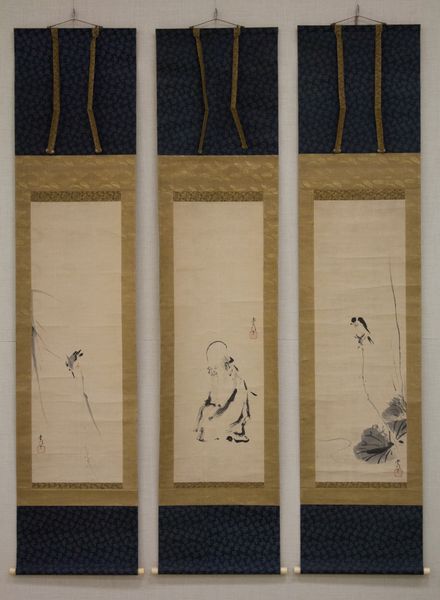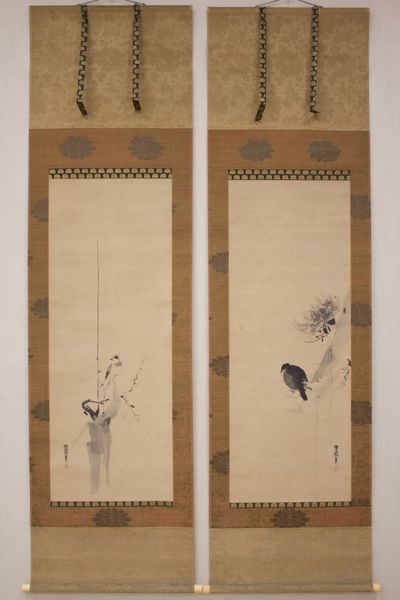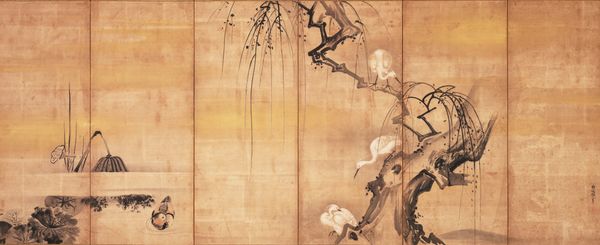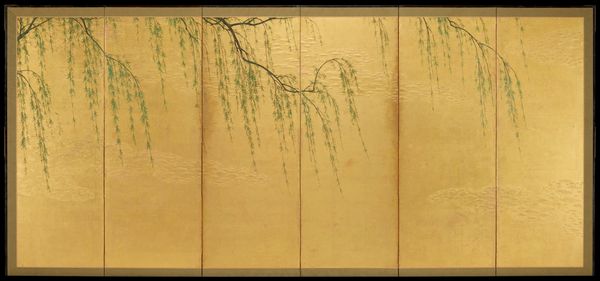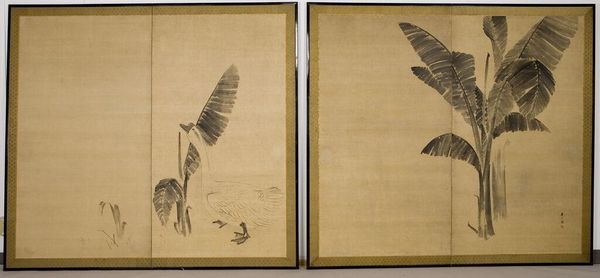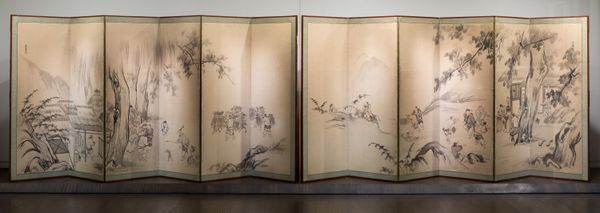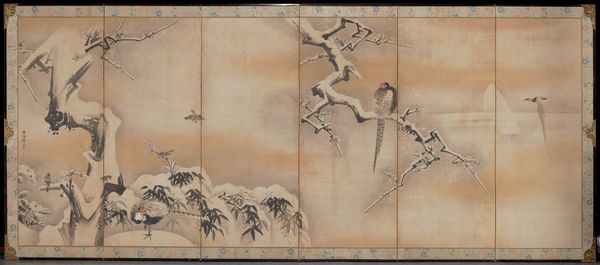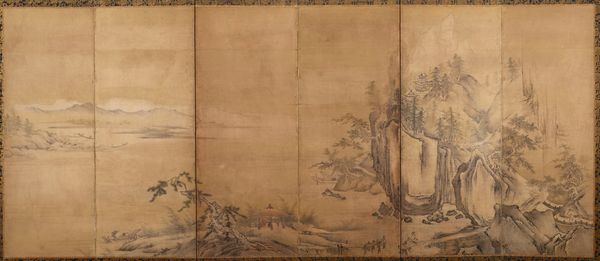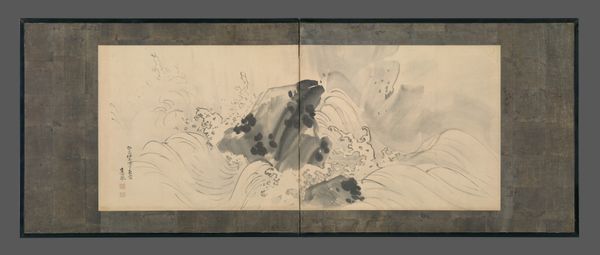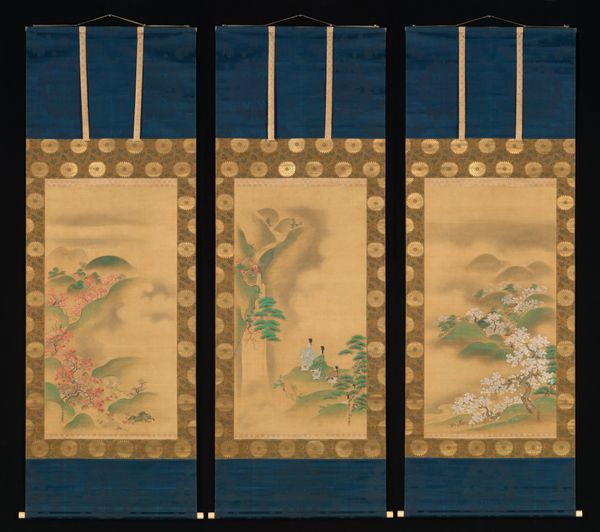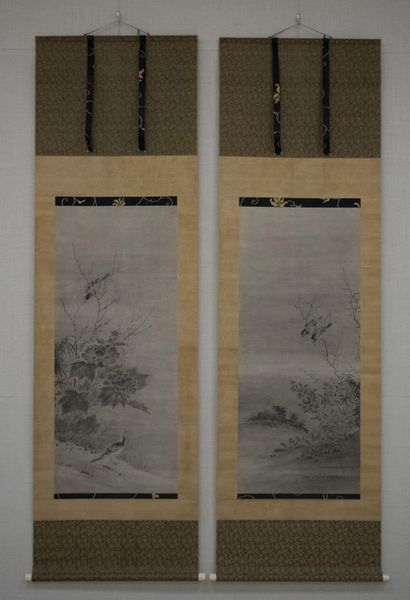![Rooster and hen in the fall rice harvest [obverse] by Nishimura Goun [obverse]](/_next/image?url=https%3A%2F%2Fd2w8kbdekdi1gv.cloudfront.net%2FeyJidWNrZXQiOiAiYXJ0ZXJhLWltYWdlcy1idWNrZXQiLCAia2V5IjogImFydHdvcmtzLzFjNTk5NmI0LWNiNGYtNDdhNy04MmVkLTdhY2I5ODZlNTE1My8xYzU5OTZiNC1jYjRmLTQ3YTctODJlZC03YWNiOTg2ZTUxNTNfZnVsbC5qcGciLCAiZWRpdHMiOiB7InJlc2l6ZSI6IHsid2lkdGgiOiAxOTIwLCAiaGVpZ2h0IjogMTkyMCwgImZpdCI6ICJpbnNpZGUifX19&w=1920&q=75)
Rooster and hen in the fall rice harvest [obverse] c. 1910
tempera, painting, textile
tempera
painting
asian-art
textile
japan
personal sketchbook
underpainting
realism
Dimensions: 70 1/4 x 110in. (178.4 x 279.4cm)
Copyright: No Copyright - United States
Editor: This is a fascinating piece! Nishimura Goun's "Rooster and hen in the fall rice harvest," painted around 1910 using tempera on textile. It has such a serene quality, almost minimalist despite depicting a harvest scene. What do you see in this piece that maybe I'm missing? Curator: What I find compelling is the implicit dialogue between the artistic traditions and the shifting social landscape of early 20th century Japan. This screen embodies a tension. While seemingly a traditional subject, reflecting agricultural life, the very act of creating such an elaborate screen hints at a move away from agrarian roots and towards increased industrialization and commercial artistic patronage. Editor: That’s an interesting point. I hadn’t considered that a scene like this might be viewed differently depending on the economic changes happening at the time. Were screens like this typically commissioned pieces? Curator: Often, yes. Think about the intended audience. Who had the means to purchase such a work? Wealthier merchants, government officials... these are people often directly benefiting from the changing economy. The screen, therefore, becomes a visual representation of nostalgia for a way of life increasingly distant from their own, idealized and consumed. How do you view the role of animals represented? Editor: Well, on the surface they reflect rural life. The animals being actively observed and not particularly romanticized is telling, isn't it? It suggests this idealized perspective might in reality not always be favorable for some who live that existence. Curator: Precisely! And in a way it offers us access to understand Japanese identity in its early transformation. What was considered important for an upper-class public. Editor: I see it now. It's less about the roosters and hens themselves, and more about the context they represent. Curator: Exactly. It shows us a society negotiating its past and its future, projected on a silk screen. It makes you think about what stories we choose to tell about ourselves, and why.
Comments
No comments
Be the first to comment and join the conversation on the ultimate creative platform.
